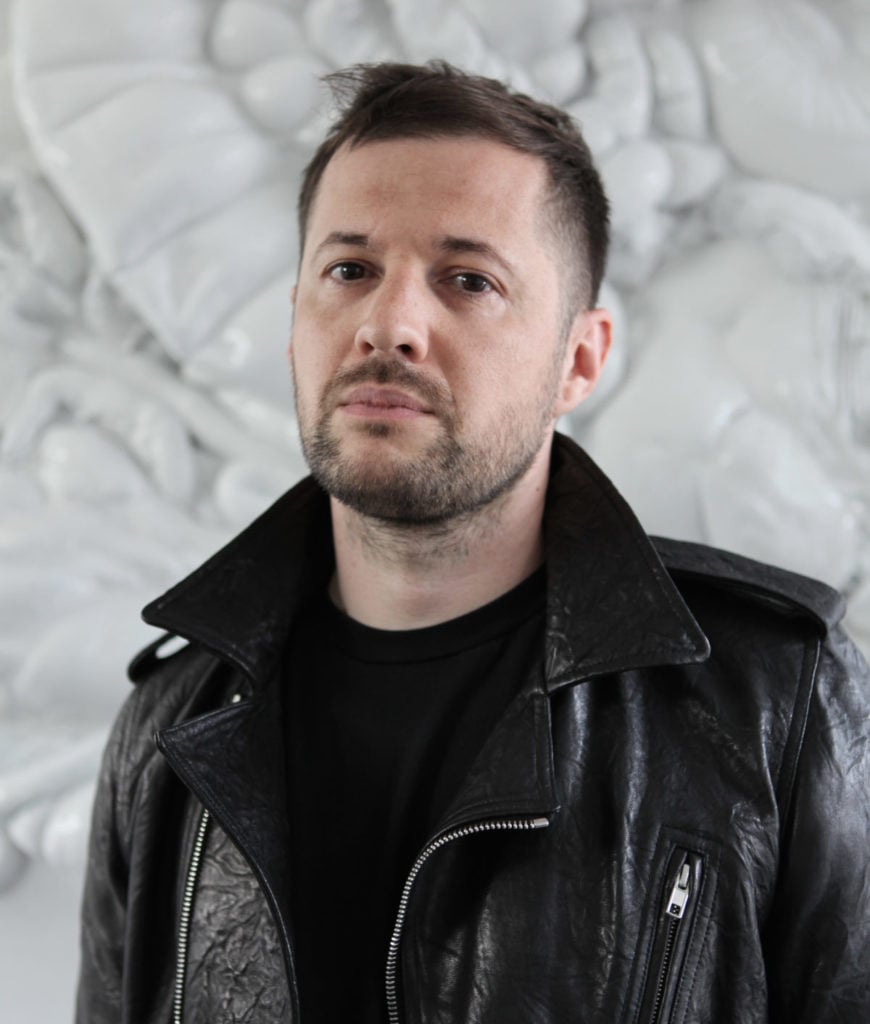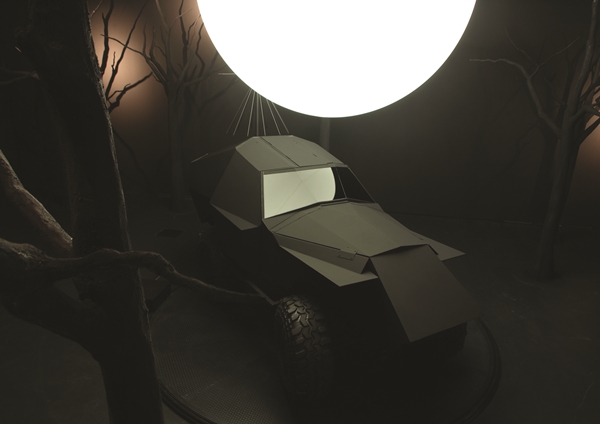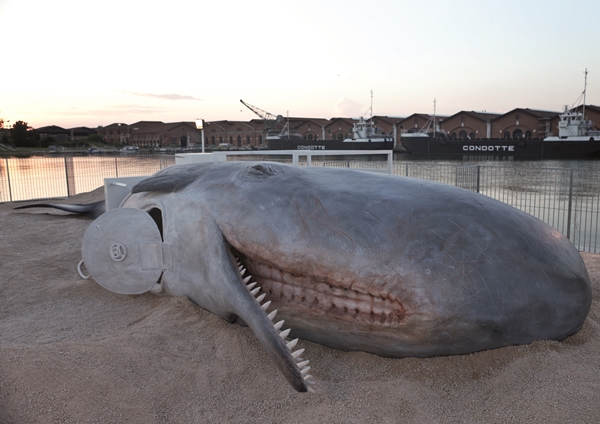Art & Exhibitions
artnet Asks: Loris Gréaud
The artist is best known for his large-scale fantastical installations.

The artist is best known for his large-scale fantastical installations.

Christie Chu

French conceptual artist Loris Gréaud refers to his artistic process as an “empirical machine.” He often collaborates with engineers, architects, musicians, historians, and scientists on projects that explore the philosophical notions of time, usually played onto a grand scale. At age 29, the artist was the first to take over the entire 40,000 square feet of the prestigious contemporary art space Palais de Tokyo in Paris with his multidisciplinary project, CELLAR DOOR. From there, the installation went on an international tour making stops at cultural institutions including ICA, London, Kunst Halle Sankt Gallen, Switzerland, La Conservera, Murcia, Spain, and Kunsthalle Wien in Austria. In 2012, Gréaud released a feature film, The Snorks: A Concert for Creatures, starring Charlotte Rampling, David Lynch, and hip-hop collective Anti-Pop Consortium. A year later, the artist notably became the only artist to have a simultaneous solo exhibition at the Louvre and Centre Pompidou with his project [I] (http://www.ll-i-ll.com).
Gréaud’s first solo museum show in the US “The Unplayed Notes Museum” will open January 18—March 21 at the Dallas Contemporary.
To begin, when did you know you wanted to be an artist?
I was quite young when I accidentally viewed Stan Brakhage’s film The Anticipation of the Night (1958). I had never seen or heard about experimental film before. I had no idea what it was. I was in front of something that communicated before it was understood, something beautiful and beyond understanding. I felt strangely reassured that such spaces could exist. I felt the urge to create my own.

Loris Gréaud, Gamblingwiththeoutdated (2010), Conservera de Murcia.
Photo: Courtesy of Loris Gréaud/Gréaudstudio.
What inspires you?
Remembering JG Ballard novels, not the way they are exactly, but the way my mind distorts the plot and story over time. Driving in my suburb at night. Any kind of constraints, any kind of obsessions. How all roads coming from different airports appear the same.
Tell us about your upcoming exhibition, “The Unplayed Notes Museum,” at the Dallas Contemporary. What do you want to convey with this exhibition?
We will really be able to talk about the project a few days after the opening. It is about the idea of self-fulfilling prophecy, situating myself in a position where at some point I lose control. It is about irresolution and how that can be productive. It is about the spaces between two states as a way to raise art coefficient. It is about decoy. It is about our fears and projection of desires.

Loris Gréaud, The Geppetto Pavilion (2011), Biennale de Venise.
Photo: Philippe Servent, courtesy of Loris Gréaud/Gréaudstudio.
How is the work a project “under its own authority”? Why the fascination with autonomous art?
I understand “under its own authority” more as a way of saying that each of my projects is defined by its own concept of time, economy process, and communication—whether it is an abstract hip hop concert, nano sculptures invisible to the naked eye, a feature film shown in theaters, candy with no taste distributed through vending machines, blasts of air, fragrance, vibrations, or full museum-specific projects.
Besides preparing for this exhibition, are you working on any other projects?
I’m constantly working on projects; some of them do not yet have destinations. Current projects in production include an important collaboration with director Michael Govan for the LACMA and a new exhibition for the Hermitage Museum in Saint Petersburg with curator Dimitry Ozerkov—a house construction with amazing architect Claude Parent.
Since [I], the double show at the Louvre Museum and Centre Pompidou, the studio has taken a major turn. I feel like I am closing a cycle.
![Loris Gréaud, [I], 2013. Musée du Louvre, Paris. Courtesy : Loris Gréaud / Gréaudstudio Crédits : Fahd El Jaoudi / Minsk Studio](https://news.artnet.com/app/news-upload/2015/01/2014-10-08_SelectionPresse9.jpg)
Loris Gréaud, [I] (2013), Musée du Louvre.
Photo: Fahd El Jaoudi/Minsk, courtesy Loris Gréaud/Gréaudstudio.